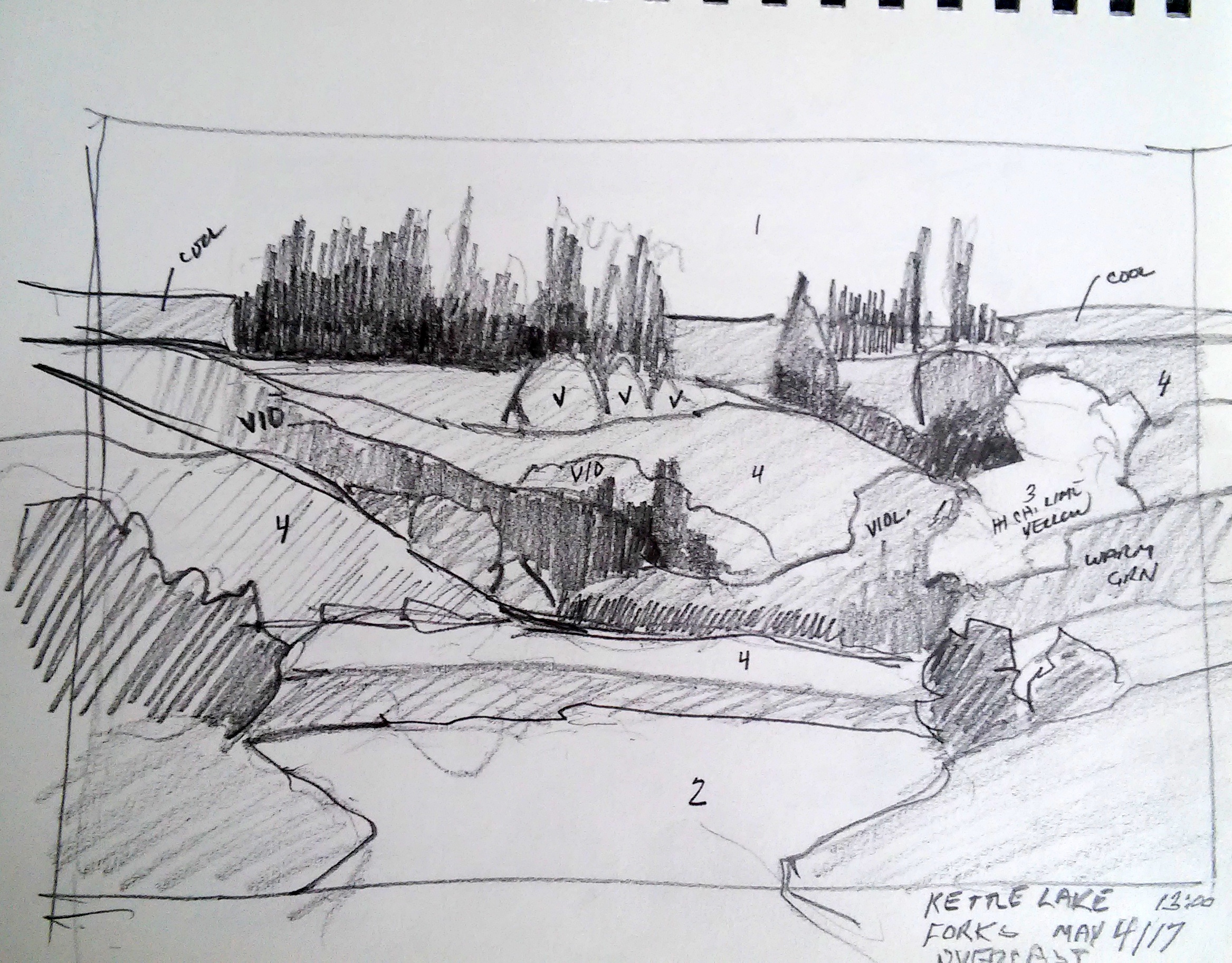September is here already. I'm packing up the camping gear and watercolour kit for a few days of canoe tripping in Killarney Provincial Park. And as I threw in an extra fleece and sleeping bag liner, it dawned on me that the summer had flown by. In early May I had to postpone a trip to Algonquin because of late opening. But I did get there -- with the ice just out and high water everywhere. It was a game of tag with the rain, but I did get a few panels done from my campsite in the South Arm of Opeongo.
South Arm, Opeongo
In early July I was back in Algonquin with my daughter for a few days north of Canoe Lake. Again, the rain kept threatening, but things seemed to quiet down late in the day..
Little Doe Lake
Mid month I was up in the Big Head River valley, west of Meaford -- an area of rolling farmland and pretty valleys. I drove around for quite a while and just couldn't seem to settle. Then I looked in the rear view mirror and stopped to paint.
Near Walters Falls
In August I spent a few days up along the Georgian Bay coast -- wind-swept white pines and sloping granite ...
Kilbear
I have not counted the 9x12 panels stored-up in the studio. And I am not too sure there is much there that would translate into a larger studio piece. But I do know that come winter -- if I am not out there trying to keep the oils warm -- these small panels will remind me of a time and place. And maybe THAT is all I need to spark the process.
p.s. If anyone ever wonders why otherwise "normal" people like to canoe off into the bush, forsaking the comforts of modern urban life, check out the sunset over Little Doe Lake ..
Photo of Little Doe Lake sunset from our site.














